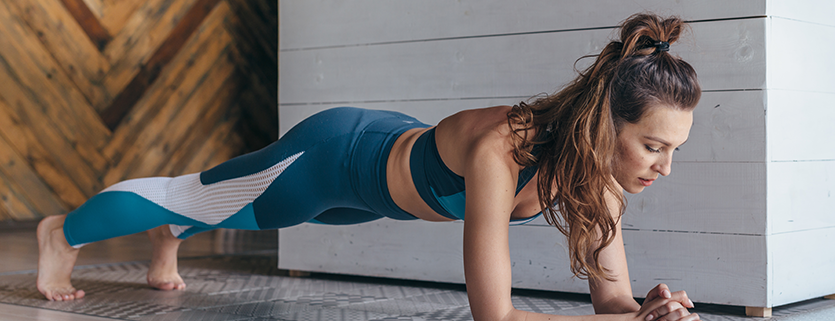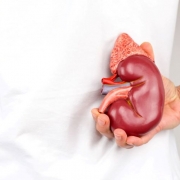More Motivation to Move: Exercise Benefits Beyond Weight Loss

Weight loss is the most popular reason people exercise. But losing weight is far from the only exercise benefit. Working out can support the health of all aspects of your body.
Here’s a full-body overview of other exercise benefits. From your brain to lungs and joints, learn why you should exercise for more than weight loss.
Brain
Your body’s command center needs exercise just as much as your waistline does. Moving your body for a few minutes every day is a great way to keep your brain in shape.
The brain relies on building new connections between neurons so you can store important information throughout your life. This action of building new bridges between brain cells is called neuroplasticity, and it increases through exercise.
Scientists believe neuroplasticity and exercise are linked because of the increase in blood flow to the brain during physical activity. With plenty of blood and oxygen circulating in your brain, regions like the hippocampus can wire new neural pathways. This can help your memory adapt and continue to improve through your lifetime.
Aging is hard on your brain. So, exercise is one thing you can do to make the transition into later life more manageable. Regular exercise has been shown to support healthy recall skills and can slow the progression of age-related memory decline.
In one study, researchers noted that even light exercise and a minimum of 7,500 daily steps were associated with an increase in total brain volume. Higher brain volume can indicate enhanced neuroplasticity in the brain. That’s how exercise can help keep your mind and learning abilities sharp as you age.
If you want to exercise to boost your brain power, cardiovascular exercises are best. The bursts of movement during cardio elevate your heart rate and send blood pumping to all areas of your body—your brain included. Cardio doesn’t need to be intense to get the job done. Your brain will benefit from a regular evening walk, bike ride, or swim in the pool. Anything that pumps your blood is great for your brain.
Mood and Hormones
People that exercise can count on a better mood as their reward—not just weight loss. The link between mood and exercise is a strong one. And it can be a great motivator to work out more.
It all starts with aerobics. Faster paced, cardiovascular movements can reduce the amount of stress hormones circulating in your blood. These hormones (like adrenaline and cortisol) often contribute to feelings of stress, anxiety, and worry. Too much of any stress hormone can even interfere with your sleep habits. This leaves you tired and unprepared to tackle your daily tasks.
Regular aerobic exercise does more than just decrease the presence of these stress hormones. Cardio and other blood-pumping workouts can even add in feel-good hormones to your bloodstream.
Endorphins are hormones produced by your brain in response to exercise. They act like natural painkillers and stress-relievers. Some people even call the rush of endorphins you experience after exercise a “runner’s high.”
Runner or not, you will like the way you feel when endorphins enter circulation. These mood-lifting biochemicals bring on a sense of euphoria and can even help combat anxiety and depression. In addition, they help you relax and calm down.
Let exercise be your go-to way to pick yourself up after a hard day. A light jog, game of tennis, or trip to the park with your family, is all you need to feel the effects of endorphins. At the same time, you’ll be reducing stress hormones and putting yourself at ease.
Heart
One of the first organs in your body to see the benefits of regular exercise is your heart. Your cardiovascular system becomes more efficient as you grow fitter. Treat your heart to some endurance training and exercise for the health of your ticker.
As your fitness level improves, you might notice your resting heart rate slow a bit. That’s because exercise makes your heart stronger and more efficient at pumping blood. A slower heart rate is a sign that your heart doesn’t need to work as hard to circulate your blood. Each heartbeat packs a little more force and pumps blood with less energy expended.
Exercise benefits your heart in other ways, too. Regular physical activity is linked to reducing fatty plaque build-up in arteries. This thickening and hardening of vessel walls can make it harder for your heart to push blood to the places it needs to be. Keeping arteries clear of hardened fat is another perk of working out.
Cardio exercises are the kind of workouts your heart needs. You’ll know you’re doing cardio when you can feel your heartbeat start to quicken. Jumping-jacks, plyometrics, running, and other fast-moving exercises are great options for cardio. Take the opportunity to work-out for your heart the next time you exercise.
Lungs
Tough workouts can leave you feeling breathless. But exercising on a regular basis can help combat this feeling of breathlessness. Aerobic movements can increase the volume of air your lungs can take in with each breath. This measurement is called lung capacity. As lung capacity increases, so does the amount of oxygen available to the muscles powering your workout.
Try breathing exercises to boost your lung capacity. You can incorporate them into your daily exercise or practice them while resting. Deep, diaphragmatic breathing and pursed-lips breathing are two methods you can use to expand your lung capacity.
Just Breathe
To do diaphragmatic breathing, place you hand on your abdomen just beneath your rib cage. Breathe deeply and focus on expanding your abdomen and stomach as you inhale. To exhale, purse your lips together like you would to suck through a straw or give someone a kiss. Push the breath out of your pursed lips slowly.
Bones and Joints
A common myth surrounding joint health is that regular exercise can lead to damaged joints. Consistent, moderate exercise can actually increase bone mass and strength, while protecting joints from swelling, pain, and erosion.
Stronger joints start with stronger bones. When muscles are activated during physical activity, they push and pull on the bones they attach to. Tension from working muscles encourages bone cells to multiply and thicken. As a result, your bone density improves.
This relationship between bone strength and exercise is important. It means that the more consistently you exercise, the stronger your bones become. And the strong bones you develop through regular movement will fare better as you age.
Another reason you should exercise for more than weight loss is to relieve stress on your joints. Swelling and stiffness can happen when your joints aren’t cared for properly. Discomfort in the joints might make exercise seem like a chore.
Don’t give in to the temptation to skip a workout. Movement and regular use of your joints can help them feel great. Daily exercise is a great way to reduce aching and promote strength in your joints.
Bodyweight exercises like push-ups, lunges, squats, and burpees are excellent bone-strengthening activities. Try to hit each muscle groups when you exercise to ensure every bone and joint benefits from your workout.
Immune System
Entire body systems, like your immune system, thrive when you exercise regularly. That’s because exercise has perks that can help keep you healthy.
Exercise promotes the turnover and exchange of leukocytes (white blood cells.) Leukocytes are part of your innate immune response and fight against pathogens that invade your body. When you exercise, the leukocytes that protect you from getting sick are regenerated.
Your immune system needs regular physical activity to defend you from sickness later in life, too. It turns out that along with the rest of your body, your immune system ages, too. Exercise stimulates immune activity that helps keep healthy and free from infection. A habit of everyday exercise can help you maintain immunity in the face of possible age-related decline.
To exercise for your immune system, find an activity that promotes circulation. Aerobic exercises and full-body movements trigger the white-blood-cell turnover that maintains your immunity. Dancing, jogging, tennis, and volleyball are great ways to move your whole body and support your immune defenses.
Working Out for Your Whole Body
Moving your muscles on a regular basis does wonders for your overall wellness. Remember, you can exercise for more than weight loss. So, try to find another factor that motivates you to exercise.
Incorporate a variety of exercises that target different health and exercise benefits. Add cardio and aerobic movements to bolster your heart, brain, and mood. Stretching and deep breathing practices work for your joint and lung health. Find a fitness groove that works for your whole body, and start working out for more than the bathroom scale.
References
https://www.sciencedirect.com/science/article/pii/S2095254618301005
https://health.clevelandclinic.org/why-exercise-protects-your-brains-health-and-what-kind-is-best/
https://www.apa.org/monitor/2011/12/exercise
https://www.healthline.com/health/how-to-increase-lung-capacity
https://www.health.harvard.edu/newsletter_article/exercise-and-your-joints













